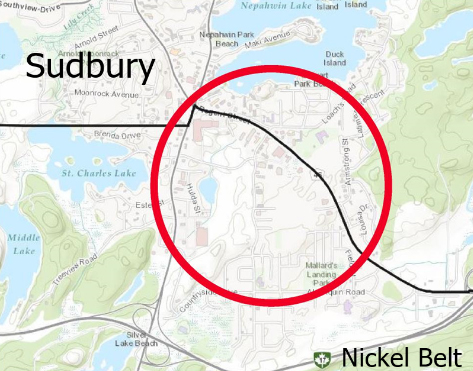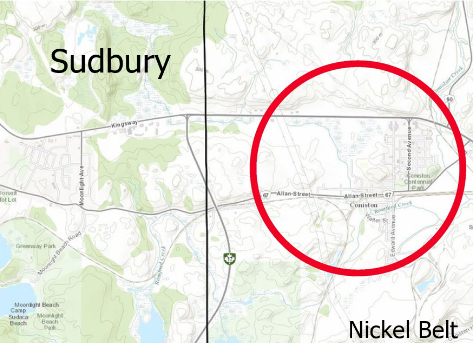Comment 212 – comments and feedback
Back to all comments and feedback from the public
Viviane Lapointe
See attached.
September 22, 2022
Ms. Paula Puddy
Commission Secretary
Federal Electoral Boundaries Commission for Ontario
PO Box 37018 Southdale
London, Ontario N6E 3T3
Via electronic mail to: ON@redecoupage-federal-redistribution.ca
Letter to the Federal Electoral Boundaries Commission for Ontario:
The Honourable Justice Lynne C. Leitch
Dr. Karen Bird
Dr. Peter Loewen
RE: Redistribution of Federal Electoral Districts
Dear Ontario Commission Members,
I want to first acknowledge the work of the Independent Commission for Ontario. Adjusting and establishing new electoral boundaries is a complex and difficult undertaking. I appreciate the work you are doing to ensure the people of Ontario are fairly and equitably represented in our electoral system.
I write to you today to share my views on the proposed redistribution plan for: (1) the Northern Ontario region; and (2) the riding of Sudbury.
Northern Ontario Region
Recently, the ten Northern Ontario Members of Parliament came together to voice concerns regarding the proposed redistribution plan. Chief among these concerns is the loss of an electoral district; the creation of electoral boundaries that will be more challenging to serve; and the limited number of consultations.
The Commission would have received the joint letter signed by the following Members of Parliament:
| Algoma--Manitoulin—Kapuskasing | Carole Hughes |
| Kenora | Eric Melillo |
| Nickel Belt | Marc Serré |
| Nipissing—Timiskaming | Anthony Rota |
| Parry Sound-Muskoka | Scott Aitchison |
| Sault Ste. Marie | Terry Sheehan |
| Sudbury | Viviane Lapointe |
| Thunder Bay- Rainy River | Marcus Powlowski |
| Thunder Bay--Superior North | Patty Hajdu |
| Timmins--James Bay | Charlie Angus |
Since issuing the joint letter, the MPs have heard from many constituents and stakeholders. All agree on the need to preserve 10 districts in Northern Ontario. The stakeholders are numerous, including First Nations, Municipal Councils, Chambers of Commerce, Francophone associations, to name just a few. These stakeholders will be making presentations at the consultation sessions scheduled for the Northern Ontario region.
Sudbury Riding
As the Member of Parliament for Sudbury, I understand and support the need for the proposed boundary changes for the riding of Sudbury. Currently, the riding is more than -18% from the population quota. The proposed changes bring the riding to 3% of the quota.
Furthermore, the proposed changes bring us closer to the footprint of the city of Greater Sudbury. They provide for continuity of service and better reflect communities of interest.
An important goal of the Commission is to not divide communities of interests. And one can readily understand why. Historical and cultural characteristics of a community are important to the people who live there. It is also important to take into consideration key elements of how people live, work, play, go to school, and receive crucial services such as emergency and health care services.
The Commission's proposed boundary changes for Sudbury accurately account for the natural boundaries that make up Sudbury such as our highways, roadways, rivers and lakes.
I would like to highlight for the Commission two areas in Greater Sudbury where communities of interest are currently divided between two federal electoral districts: Sudbury and Nickel Belt.
These two neighbourhoods are part of the "South End" area of Sudbury. Residents work, attend school, shop, eat and partake of trails and beaches within the federal riding of Sudbury but are divided from Greater Sudbury when it comes to federal districts.
Regent Street is one of five major roads within Greater Sudbury and continues into the riding of Nickel Belt. The North side of Regent Street is in the Sudbury riding where there are grocery and retail stores, both primary and secondary schools and Health Sciences North, Greater Sudbury's area hospital. The South side of Regent Street, primarily residential, is in the Nickel Belt riding. The federal boundary dissects a thriving, cohesive community.
The Commission's newly proposed electoral boundary for Sudbury does include these areas. I fully support this change and want to thank you for your work in uniting these communities as well as bringing the Sudbury riding closer in line with the Representation Formula found in subsection 51(1) of the Constitution Act, 1867 and the application of the Representation Rule.
Should there be future changes to the proposal as it currently stands, I wanted to highlight the importance of these communities and residents being included in the riding of Sudbury.

Existing electoral boundary

Existing electoral boundary
Riding Name Change
The Greater Sudbury region is served by two Members of Parliament for the ridings of Sudbury and Nickel Belt. These two distinct names reflect the geographical areas and characteristics of the two ridings. Sudbury represents much of the Greater Sudbury area, an urban and suburban area, while Nickel Belt encompasses the surrounding rural, mineral rich geographical area.
In order to ensure clarity of federal representation for constituents, I request the Commission maintain the current riding names of Sudbury and Nickel Belt. Regardless of any boundary changes or adjustments, it is imperative the Sudbury riding maintain sole proprietorship of the region of Sudbury name.
Thank you in advance for your consideration of my requests to the Commission. Regardless of the outcome, my priority is, and will remain, serving the constituents of my riding.
Sincerely,
Viviane Lapointe, Member of Parliament Sudbury
xxx xxx xxxx
xxxxxxx.xxxxxxxx@xxxx.xx.xx
Presentation to Electoral Boundaries Commission for Ontario October 26, 2022
My name is Viviane Lapointe. I am the newly elected Member of Parliament for Sudbury, situated in northern Ontario on the lands of the Robinson Huron Treaty territory.
There are two key points I want to share with the Commission members this evening.
Sudbury Riding
First, I want to address the riding of Sudbury.
The City of Greater Sudbury is the largest city in the north and is the central hub for northern Ontario. The city is a regional centre in financial and business services, tourism, health care, research, education and government.
- Our hospital is the regional tertiary centre and regional referral centre for the northeast.
- Sudbury is a global mining centre – with the largest mining, mining manufacturing and mining innovation activity in the country.
- We have four school boards, three post secondary institutions and a Medical School.
- The second largest science centre in Canada is situated in Sudbury.
- We have successfully created an innovation and research hub in the fields of medical, mining, and environmental reclamation.
All of the characteristics I just listed create an urban community of many like-interests. The riding of Sudbury is a cohesive urban unit with areas of common interests related to representation.
I believe the Commission understood these urban communities of interests in your proposed boundary redistribution. I fully support the Commission's proposed revisions for Sudbury. The proposal respects the urban nature of Sudbury and preserves these distinct qualities woven into our identity.
As the hub for northern Ontario, Sudbury's urban community characteristics must be preserved. Sudbury is a vibrant and innovative urban centre and this makes it an important and vital community of interest for the north.
Along the same vein, I want to address the existing riding names of Sudbury and Nickel Belt.
These electoral district names accurately reflect the distinct geographical and urban/rural community characteristics. Sudbury represents much of the Greater Sudbury urban and suburban area, while Nickel Belt encompasses the surrounding rural geographical area.
Criterion in constituency districting is a means of expressing voter identification with the communities of interest of which they are a part of and identify with.
In order to ensure clarity of federal representation for constituents, I support maintaining the separation of regions in the riding names – as the Commission itself proposed in the redistribution process.
No matter the result in boundary adjustments, it is imperative the Sudbury riding maintains proprietorship of the Sudbury or Greater Sudbury region, in name.
Northern Ontario Representation
The other matter I want to address is that of northern Ontario as a whole. I want to add my voice to the other northern Ontario MPs, as well as the many stakeholders who presented at previous sessions, in expressing our concern with the reduction of a seat in northern Ontario.
The vast geographical nature of northern Ontario means we have unique characteristics and challenges not experienced in other parts of the province.
We have a large land mass, dispersed populations, a large Francophone presence, and numerous Indigenous communities. These distinct characteristics were well described by stakeholder groups, other northern MPs, business sector representatives as well as municipally elected officials.
At the very core of our objections is the ability to serve constituents. Effective representation should ensure that MPs are accessible, and that residents have equal access to federal government services, regardless of where they live.
Our position is unified and unwavering. And I fervently add my voice to reiterate: Northern Ontario must retain its current 10 ridings.
Conclusion
In raising these two points with you this evening, my goal – as has been the goal of the other MPs and stakeholders who presented before me – is to ensure effective representation for the people of northern Ontario.
In closing, I extend my best wishes to each of you as you continue your difficult work. Your time, hard work and sacrifice in taking on this responsibility has not gone unnoticed by the people of Ontario.
Thank you.
